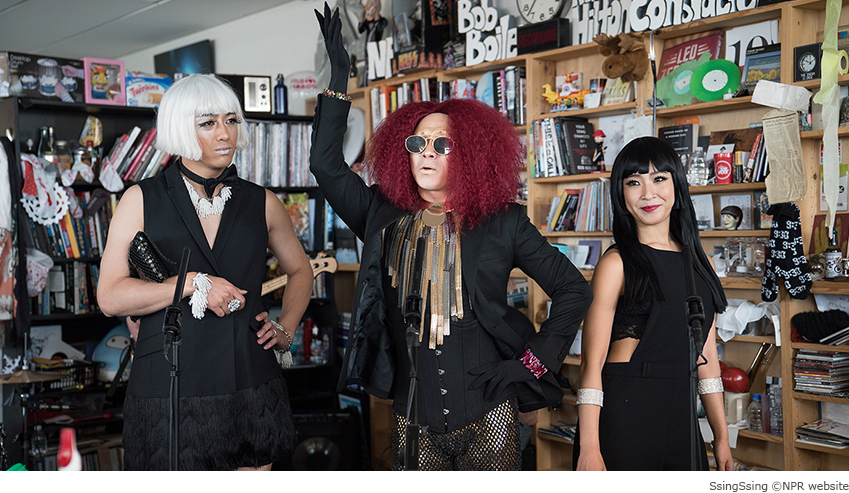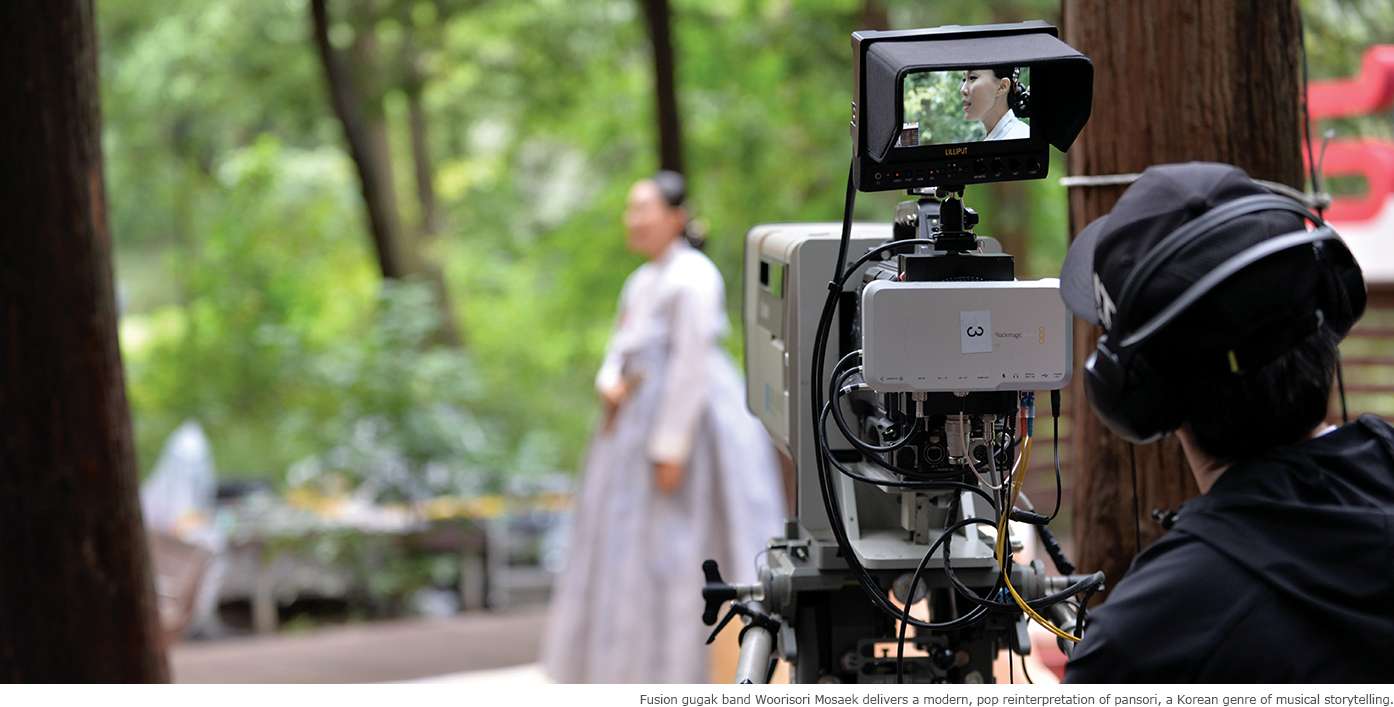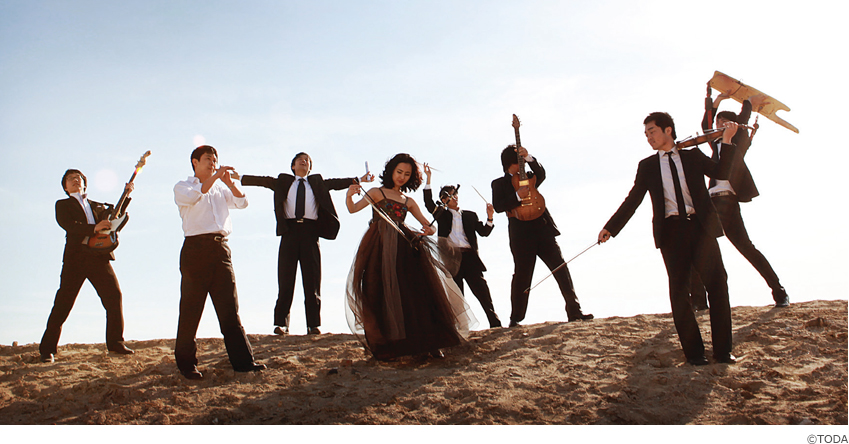

Gugak and K-pop:
Sharing the Spotlight
Korean music both traditional and
modern share today’s music scene.
For many listeners, gugak fused with modern musical elements has an unconventional elegance and a fresh appeal. If more people take an interest in such experimental music, however, gugak and K-pop will be able to build a stronger global presence.
Written by Han Dong-yoon, Popmusic critic

Expanding the scope of K-pop
BTS has made its name in the Western pop market, as well. Overtaking megastars such as Justin Bieber and Ariana Grande, the boy band took home the Top Social Artist award at the Billboard Music Awards 2017. In November 2017, it gained even more fans with its spectacular performance at the American Music Awards. The Steve Aoki remix of the song “MIC Drop,” released in November 2017, rose to No. 28 on Billboard’s Hot 100 Chart in December. BTS’s breakthrough has helped to further enhance the reputation of Korean pop all around the world.
Although not as prominent as BTS, Korean indie bands such as SsingSsing and Jambinai have also contributed to a rising awareness across the globe of the diversity to be found in the Korean music scene. What makes these bands stand out is their mixing of elements of traditional Korean gugak music with their more modern dance tunes.

Creative blend of rock
and Korean folk music
SsingSsing gained fame after its appearance on NPR’s “Tiny Desk Concert” in September 2017. A 15-minute video of its “Tiny Desk” performance was viewed more than one million times in two months. The YouTube page featuring the video is buzzing with positive comments and appreciation for the band. When a rock or reggae beat is used, the style is similar to what we usually hear in Western pop music.
The Korean folk music-based vocals, on the other hand, are completely different from Western pop singing. SsingSsing’s masterful blending of rock and traditional folk music, which has never been attempted in Korean pop music before, has left a deep impression on music lovers. The band’s unique appeal also lies in its mesmerizing vocals and air of mystery.
Highly reputed in the world of pop, Jambinai has been invited to several music festivals, such as Glastonbury and South by Southwest. In 2015, it signed to Bella Union, a famous indie record label in the U.K. Its second album, “A Hermitage,”
was released in 2016 and was well-received by music critics in various countries. The highly-acclaimed Jambinai performed more than a dozen sets at international festivals in 2017 alone, doing its part to spread the popularity of Korean music of all types.

Jambinai is a post-rock band with roots in progressive rock, free jazz, psychedelia and ambient music. Its songs are infused with the haunting sounds of traditional Korean folk instruments, including the traditional Korean zither, known as a geomungo, the two-stringed fiddle called a haegeum, and the double-reeded oboe-like wind instrument the taepyeongso. These seemingly discrepant elements are harmonized in the typical dramatic structure of exposition, complication, climax and denouement. The unfamiliar tunes resonating from traditional Korean instruments add to the exotic atmosphere. Jambinai’s musical prowess and use of traditional instruments have set higher standards for musicians everywhere, while flaunting the richness of traditional Korean folk sounds.
Vidan is another group that has embraced traditional Korean music. This is evident in its slogan: singing the treasures of Korea. Since its debut, it has created songs about Korea’s cultural heritage and historical figures. Topics have included royal Joseon palaces, traditional Hanok architectural styles, the martial art taekwondo, the tale of Simcheongga (심청가, 沈淸歌) where music helps the blind to see again, the proclamation of the Hangeul Korean alphabet in 1443 via the official royal document “The Proper Sounds for the Instruction of the People” (Hunminjeongeum, 훈민정음, 訓民正音), and even Admiral Yi Sun-sin (1545-1598) himself. The group tries to raise awareness of ancient Korea by producing music videos in simplified Chinese and Mandarin, English, French, German and Russian. Its songs, which achieve harmony between pop and traditional folk music, are pleasant and comfortable. Thanks to its eloquent visualization of both music and tradition, Vidan can be considered a digital docent of traditional Korea.

Unconventional elegance
and a fresh appeal
Blends of traditional gugak music with modern music are becoming increasingly popular. The group Toda integrates progressive rock and European classical music into gugak, while Ensemble Souljigi recreates traditional poems and Korean opera using a capella.
The group Tan+Emotion plays across genres, from alternative rock and pop, to world music, all using traditional Korean folk instruments. Woorisori Mosaek offers a modern reinterpretation of pansori, a type of traditional Korean musical storytelling, but from a pop perspective. From all these bands, we can see that the fusion of traditional folk music and pop music is a growing trend across the Korean music scene.
For many listeners, gugak fused with modern musical elements has an unconventional elegance and a fresh appeal.. If more people take an interest in such experimental music, however, gugak and K-pop will be able to build a stronger global presence. I look forward to the day when modernized gugak is appreciated both in Korea and around the world.


Other Articles


K-pop tomorrow

Sharing the Spotlight

Where Past Meets Present

para ice hockey player

well-designed things

Smart Technology, Services

Korea’s Take on Chicken


in Hong Kong
Application of subscription
Sign upThe event winners
Go


 March 2018
March 2018




